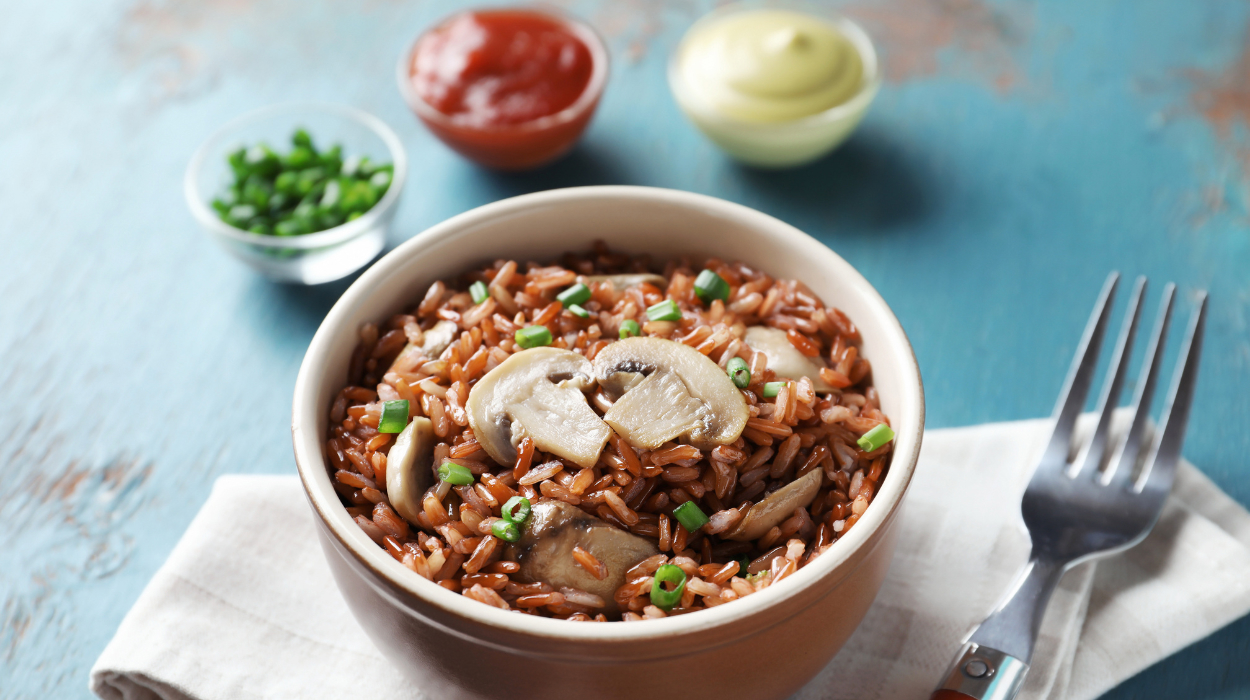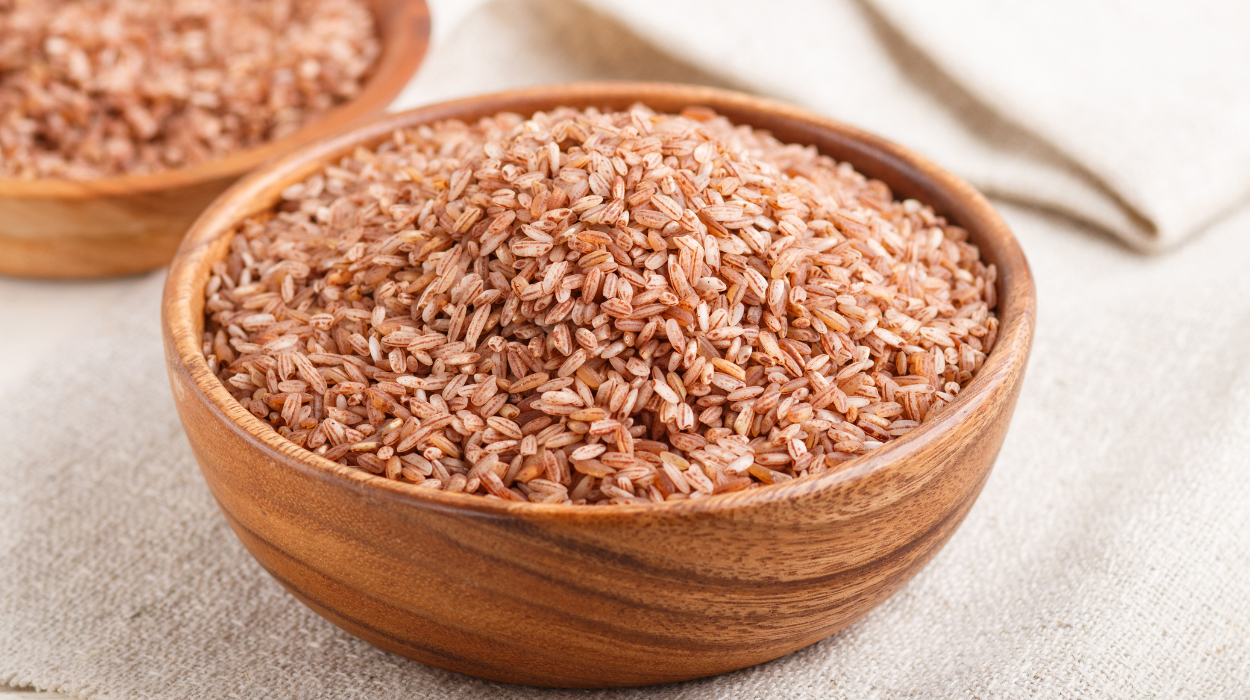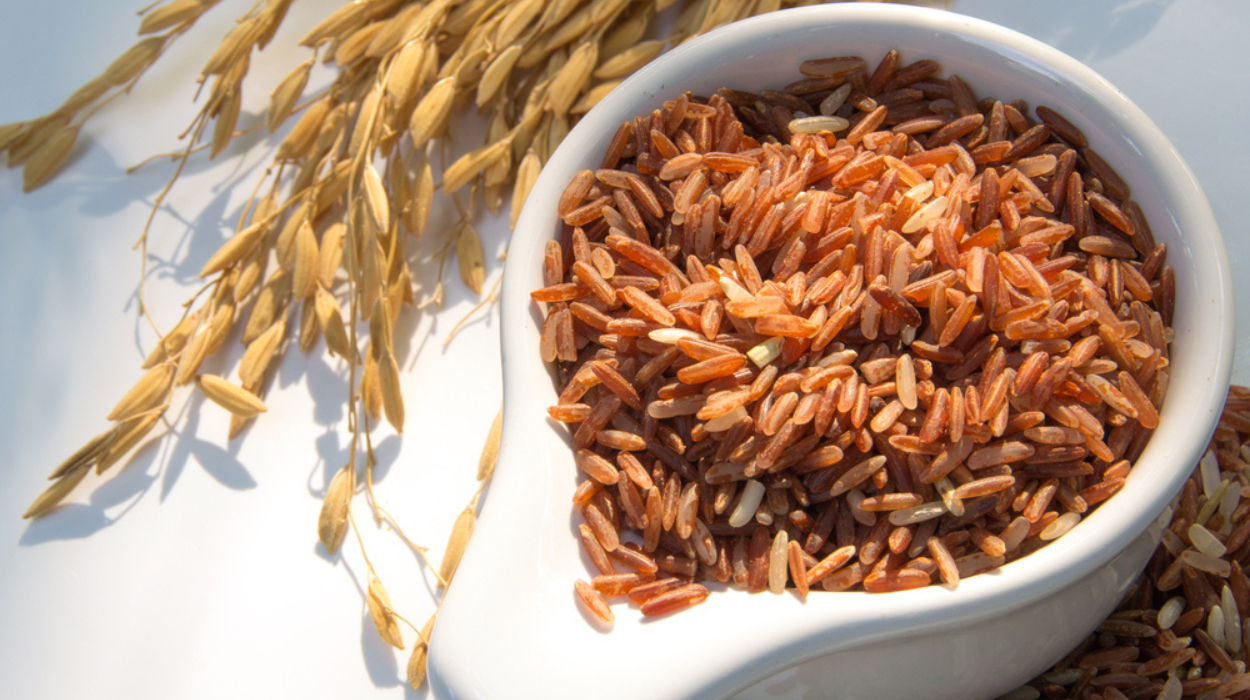Rice is one of the most widely consumed[1] foods in the world and a staple of many people’s diets. This starchy grain is a rich source of carbohydrates and micronutrients, but some types of rice offer more health benefits than others.
Brown rice is a whole grain and, unlike white rice, contains bran and germ. The bran and germ are removed from rice during processing, making the grain whiter, softer, and easier to digest. However, the removal of the bran and germ also strips it of key proteins, fats, vitamins, and minerals, making the glycemic index higher.
There is no template for a perfect balanced diet; what works for you depends on your health goals, cultural needs, and personal preferences. Brown rice is undoubtedly a better source of nutrients than white rice, but is brown rice good for weight loss? Read on to learn how brown rice can aid weight loss and protect against long-term medical conditions.
Is Eating Brown Rice Good For Weight Loss?
Brown rice contains more protein and fiber than white rice. This makes it more satiating, meaning it keeps you feeling full for longer and can reduce the urge to snack between meals. White rice also has a higher glycemic index than brown rice and raises your blood sugar more quickly, contributing to weight gain, appetite control issues, and weight-related health conditions.
Brown rice also contains more nutrients than white rice and is rich in antioxidants. Antioxidants have many health benefits and can reduce your risk of serious health conditions like heart disease, cancer, and type 2 diabetes.
Is Brown Rice Good For Weight Loss?

Most people are familiar with white rice, typically served alongside chili, curry, and a variety of other dishes, but it may not be the best choice for people trying to lose weight. Brown rice is less processed than white rice and contains more vital nutrients required to keep your body healthy. Studies have also found that brown rice may be beneficial for weight loss,[2] so adding brown rice to your diet could help you shed excess pounds.
How Brown Rice Can Help With Weight Loss
Rice is carbohydrate-dense, so why is eating brown rice good for weight loss? The answer lies in the bran and germ, two components of all whole grains that are removed during processing.
Removing the bran and germ produces white rice, which is easier for your body to digest. Unfortunately, this process also removes many health benefits from eating brown rice. Most of the nutrients in rice are concentrated in the bran and germ; without them, rice loses many properties that make it beneficial for weight loss.
Rice bran is an excellent source of fiber,[3] which is essential for healthy digestion. Brown rice also contains a decent amount of protein. Foods high in protein and fiber are known to be highly satiating,[4] meaning they keep you feeling fuller for longer. Protein is also thermogenic, increasing your metabolism higher than either carbohydrates or fats.
If you’re trying to lose weight, adding brown rice to your nutrient-rich diet may help you resist the urge to snack between meals and reduce your overall calorie intake.
Brown rice also has a lower glycemic index than white rice at a GI score of 50 for brown rice and 70 for white rice. The GI measures how quickly a specific food increases blood sugar levels.
A low GI diet high in whole grains, green vegetables, fruits, and beans can aid weight loss[5] by stabilizing your blood sugar levels and reducing hunger pangs. Substituting brown rice for white rice can make a meal low-GI, improving blood sugar control and contributing to weight loss.
The Nutritional Value Of Brown Rice

Brown rice is a rich source of[6] important nutrients like vitamins, minerals, essential fatty acids, and fiber. Although rice predominantly comprises carbohydrates, brown rice contains 13% more protein[7] than white rice. This makes it[8] more satiating, better for muscle health, and more conducive for weight loss than white rice.
A 100-gram portion of brown rice (about one-half cup) contains 122 calories, 2.73 grams of protein, 0.96 grams of fat, 25.45 grams of carbohydrates, and 2.6 grams of fiber. Brown rice is also rich in essential vitamins and minerals, including iron, calcium, magnesium, potassium, zinc, vitamin C, vitamin B6, vitamin B12, vitamin A, thiamin, and niacin.
Brown rice is also packed with polyphenols, compounds with powerful antioxidant and anti-inflammatory properties that can reduce your risk[9] of cancer, heart disease, high blood pressure, and type 2 diabetes. Polyphenols can also help regulate your metabolism and help you maintain a healthy weight. Brown rice can be a sensible choice for those on a weight-loss diet.
Which Brown Rice Is Good For Weight Loss?
Eating white rice causes your blood sugar levels to spike and can contribute[10] to weight gain. This doesn’t mean you shouldn’t eat rice, but there are better options for weight loss than refined grains. Brown rice is an excellent high-fiber food for weight loss, but, like white rice, it comes in a range of different varieties.
There are four types of brown rice: short grain, medium grain, long grain, and light brown. All brown rice varieties are whole grains and contain the same essential nutrients, though light brown rice has less bran than the other types. The main difference between brown rice varieties is their cooking time and culinary uses.
However, other types of rice contain even more vitamins and minerals than brown rice. The most nutritious type of rice is thought to be black rice, as it has the highest antioxidant activity[11] of all known rice varieties. It also has a higher protein and fiber content and a lower glycemic index than brown rice, making it one of the best types of rice for weight loss.
How To Add Brown Rice To Your Diet
Brown rice can benefit weight loss, lower blood pressure, and reduce your risk of heart disease, cancer, and type 2 diabetes. This nutritious whole grain is a wise choice for those pursuing a healthy lifestyle, but you may not know where to begin if you’ve never cooked brown rice. Fortunately, there are plenty of easy and delicious ways to include brown rice in your diet.
Cooked brown rice is a delightful accompaniment for all kinds of meat and vegetable dishes and a healthy addition to salads, soups, and grain bowls. You can boost the slimming properties of brown rice by eating it alongside high-protein foods for weight loss, such as chicken, fish, and other lean cuts of meat. Protein is highly satiating, so eating a portion at meal times can reduce your urge to snack and help you lose weight.
If you don’t like eating rice, don’t worry — there are plenty of other ways to include brown rice. For example, brown rice flour is made from ground brown rice and is used to make brown rice pasta. It can also be used as breading, to thicken soups and sauces, and as a gluten-free alternative to wheat flour in baking.
Short-grain brown rice is a soft, sticky variety that’s delicious in brown rice porridge. Brown rice porridge can be served sweet or savory and is extra nutritious when eaten with nuts and dried fruits.
Other Effective Ways to Lose Weight
A healthy, balanced diet high in quality protein and fiber is key for shedding pounds and slimming down. Still, exercise in the appropriate target heart rate zone is equally important. Regular cardiovascular activity and strength training exercises can improve your heart and muscle health and may help to prevent long-term weight gain.
Increasing your lean body mass through exercise can also increase your metabolism, meaning your body burns more calories throughout the day.
The most effective way to lose weight is by eating fewer calories and exercising more often, but if you want to accelerate the process, weight loss supplements may help. The best thermogenic fat burners typically contain caffeine and green tea extracts, two active ingredients clinically proven to boost metabolism[12] and aid weight loss.
Conclusion
Rice is a staple food for around half the world’s population, but is rice good for weight loss? Eating white rice every day won’t necessarily make you gain weight, but if you want to slim down, brown rice may be the healthier choice. Brown rice is a nutrient-dense food that contains more fiber, protein, and vitamins than white rice and significantly benefits your waistline and overall health.
Not only is brown rice healthy for weight loss, but it also has antioxidant and anti-inflammatory properties that can protect you from several severe medical conditions. Studies have found that people who regularly eat brown rice instead of white rice have a lower risk of type 2 diabetes[13] and other chronic health conditions.
Frequently Asked Questions
Brown rice can be enjoyed daily as part of a healthy diet. Using it to replace white rice may help prevent weight gain by regulating your metabolism and reducing hunger pangs between meals.
White rice is easier to digest than brown rice, so for some people, brown rice can cause stomach problems such as bloating, pain, and gas.
Brown rice contains polyphenols with powerful antioxidant and anti-inflammatory properties.
Brown rice and other whole grains are integral to a healthy diet. A balanced diet and regular exercise are highly effective for weight loss and can help you lose fat from all body parts, including your belly!
 Evidence Based
Evidence Based
